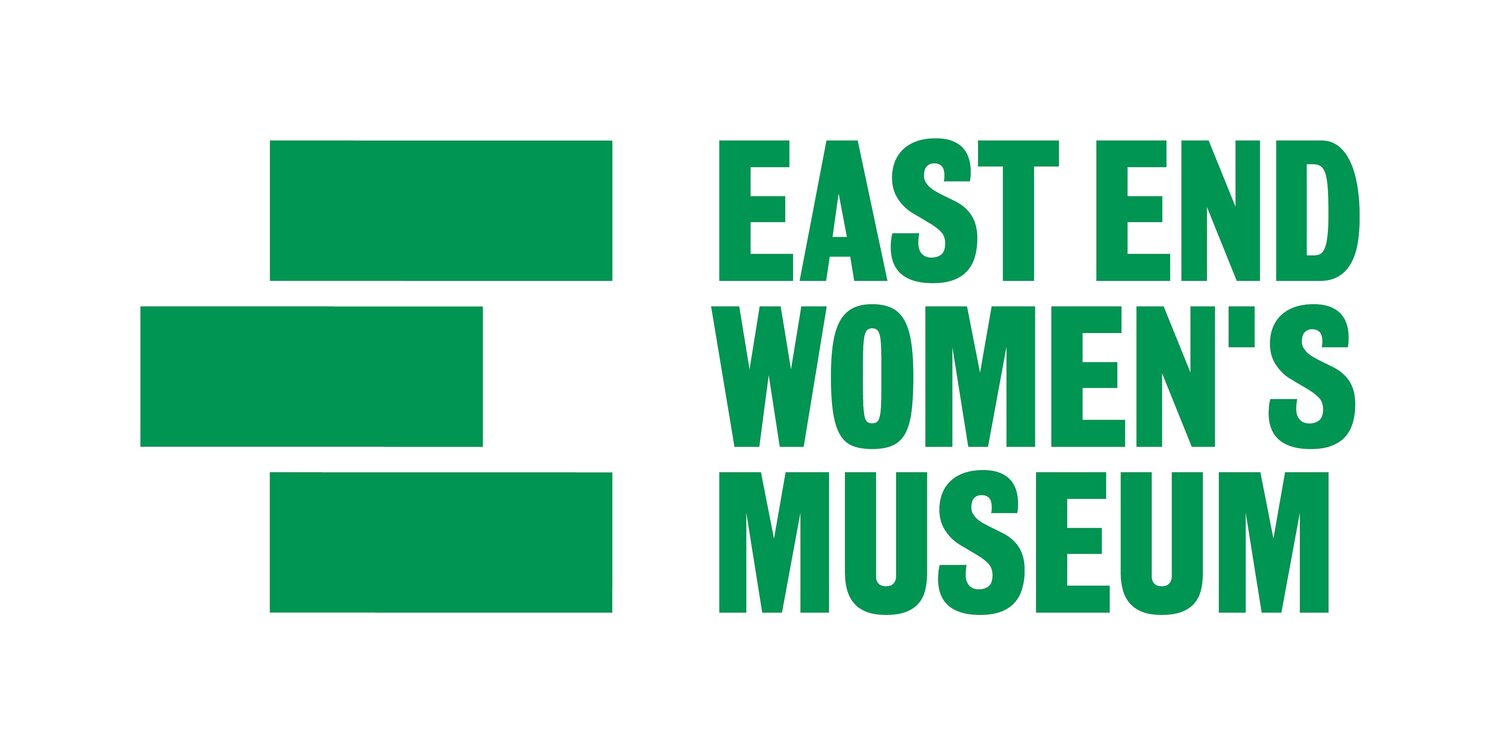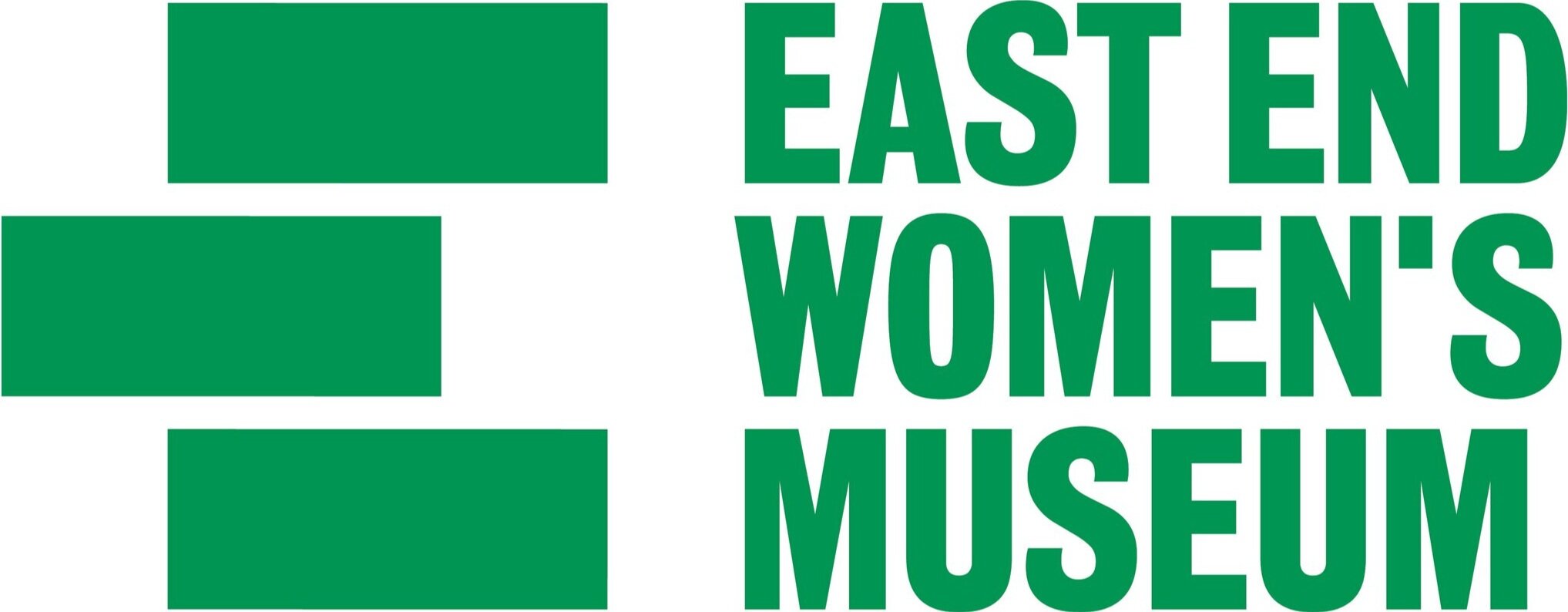Museum volunteer Charlotte Elliston tells us more about the women’s history she’s discovered in her local area, during her daily walks under lockdown…
I hope you’ve been enjoying our #WomensHistoryonMyWalk threads on Twitter, with some great new and interesting places to visit on your walks. This is the second of my blogs exploring some of the women’s history sites I’ve been able to walk to and enjoy reading about during the coronavirus lockdown in London, as I live on the borders of Hackney and Tower Hamlets (the first blog, on Shoreditch and Hoxton, is here).
1. The area directly south of my home is Spitalfields and using some very basic searches online for women’s history in the area brings up the fact that Mary Wollstonecraft was born here in 1759. One source suggests that she was born on Primrose Street, which is now a completely modern office development, but just a street or two over you can find streets of 18th-century houses which I like to think would be similar to the house in which Mary lived. The area was a hub for the silk weaving industry, which Mary’s father had been trained in and was possibly the reason the family came to live there.
18th-century houses in Spitalfields (c) Charlotte Elliston
Mary Wollstonecraft is an important figure in feminist history, being an educator, philosopher and author, and having written A Vindication of the Rights of Women in 1792. There is already a great piece on our website exploring some key figures (including Mary) in the early struggle for women’s rights so I don’t need to say much more about her.
2. Looking for traces of Mary’s life in Spitalfields, I came across a blue plaque to Anna Maria Garthwaite which I had not noticed before. The plaque reads 'Anna Maria Garthwaite, 1690-1763, Designer of Spitalfields Silks Lived and Worked Here'. It appears that she was known as one of the most eminent textile designers of her time.
Home of Anna Maria Garthwaite (c) Charlotte Elliston
Anna was the daughter of a Leicestershire rector Ephraim Garthwaite and his wife (who has one of the most wonderful names I’ve come across, Rejoyce), and in 1728 moved to London with her sister Mary. As I have said, in the 18th century, the Spitalfields area was full of textile manufacturers, as many French Huguenot refugees made homes in the area and brought their skills in fabric design and manufacture with them. It is of no surprise that someone wanting to build a silk weaving business would move to the area, but what is interesting is that Anna had no family history of silk weaving, but somehow learned the trade herself and made it such a roaring success at the (for the time) late age of 40.
During her 35 year residence in Spitalfields she created over 1000 designs for woven silks, adapted a French technique to represent three-dimensional patterns through use of shading, and designed large scale damasks and brocades. Her use of colour, light and shade created a trend for naturalistic and botanically accurate floral silk designs, and her work was incredibly highly sought after. Many of Anna Maria Garthwaite's designs can be seen in the V&A museum’s collections online (do a search under her name - it's worth it), and a gown made from one of her designs is even apparently on display in the museum’s British Galleries. I will definitely be making a visit to go and see it when they reopen.
3. Just around the corner from Anna’s home, I came across another blue plaque, this time to Miriam Moses who was born in the house in 1886 (or possibly in 1884 as other sources state). She was one of nine surviving children of Mark Moses, who had come to the UK from Germany as a child, and his wife, Hannah (Annie) Ehrenberg.
Plaque marking the birthplace of Miriam Moses (c) Charlotte Elliston
Miriam was incredibly active in both local community work and as part of the wider Jewish community, always supporting and championing women and their rights. In 1922, she became the first female justice of the peace in Whitechapel, and during WWII she was chief air raid officer for the area, establishing a hostel for young women made homeless by bombing. She was awarded an OBE in 1945 for this work.
Alongside Elsie Cohen, she co-founded the Brady Girls' Club in 1925 on Hanbury Street, as a parallel to the older Brady Boys' Club, which provided educational and leisure opportunities for Jewish young people. She was a founder member of the League of Jewish Women, later serving as president, and a member of the Jewish League for Women’s Suffrage and fought for women's voting rights for the executive of the United Synagogue, succeeding in 1954.
The blue plaque commemorates Miriam for her political career. She was active in politics throughout her life, standing for election as local councillor with both the Progressive party and as an independent candidate in the 1920s. In 1931, she was elected as the first female Mayor of Stepney, and the first female Jewish mayor in the country. Key aspects of her campaigning were support of women's rights such as provision of contraception, and condemning anti-immigrant housing policies. Her life was celebrated in the TV show ‘This is Your Life’ in 1958.
Miriam Moses and guests on This Is Your Life, sourced from www.bigredbook.info/miriam_moses.html
4. Next on my Spitalfields list was to go and visit Spital Yard, as I was in search of a story related to Dona Luisa de Carvajal y Mendoza, a Spanish Catholic activist and poet. Luisa was born in 1566 into a wealthy family and lived most of her early life in Madrid, Spain. Educated to University level in literature and theology, she chose to live a religious life, though deciding not to take orders as a nun, opting instead to take her own religious vows.
Luisa devoted herself to the needs of the poorest women in society. She traveled to the UK in 1605 with the aim of promoting the Catholic religion and brought with her a priest disguised as a servant. As well as continuing her charitable work, she was also a poet, writing in various styles, and her letters offer insight into the religious situation in the UK at the time. In 1611 she rented a brick house on Spital Yard and set up a religious community of five women called the ‘Society of Sovereign Virgin Mary Our Lady’, which women entered voluntarily if they wished to dedicate their lives to Catholicism and were, apparently, willing to commit to die for their beliefs. The house was well guarded and self-sufficient, as at the time Catholicism was illegal in England, and the women who resided with Luisa were referred to as ‘Soldier Maidens’. In 1613 the house was raided by order of the Archbishop of Canterbury, due to the Society’s similarity to a convent, and Luisa was imprisoned. Although released on the condition she return to Spain, she died soon afterwards.
Luisa de Carvajal y Mendoza
5. Spital Yard proved difficult to find, hidden behind a new office development on the edge of the City of London. Although I sadly found no trace of Luisa and her community, I did spot an interesting looking building at the end of the narrow passage, and was excited to spy yet another blue plaque. Although Tower Hamlets only has five blue plaques to women in total (at the time of writing), three of them seem to be within a five minute walk of each other! This plaque reads “In this house, Susanna Annesley, mother of John Wesley was born January 20th 1669”
Blue plaque to Susanna Annesley in Spital Yard (c) Charlotte Elliston
Although the plaque lists her as a ‘mother of’ a well-known man, she deserves to have her achievements listed for herself, as they were considerable. She had 19 children (although sadly due to high infant mortality of the time, only 10 survived childhood) and educated them all to a high standard, including teaching them Latin and Greek. Her husband went to jail twice and left her for an extended period once, leaving her in sole change of her household and family.
Susanna took religious sermons herself for her family, which her neighbours started to attend and eventually grew so popular that 200 local people attended. She also wrote religious texts for her personal and family use. She has since been dubbed ‘The Mother of Methodism’ from the religious movement founded by her son John. Also within walking distance of my home (although just outside the borough) is her burial place in Bunhill Fields, as she spent the final years of her life living at John’s home The Foundery in Moorfields (close to the current Wesley’s Chapel on City Road).
Photograph of a painting of Susanna Wesley (née Annesley) by an unknown artist from the original held at Epworth Old Rectory.
I hope you have been inspired reading this to look out for your own women’s history sites on your daily excursions. If you are interested in searching out some places near your own home to visit, try some simple internet searches using key words such as your location and things like ‘woman’ and ‘history’ - you’ll find there are all sorts of interesting stories waiting to be discovered. Please don’t forget to tag us in your East London findings on Twitter: @EEWomensMuseum #WomensHistoryonMyWalk.
Further reading
If you are keen to read more about any of the women mentioned, here are some reference links:
https://spitalfieldslife.com/2018/05/03/at-the-brady-clubs
www.bbc.co.uk/history/british/empire_seapower/wollstonecraft_01.shtml.
https://londonist.com/london/history/in-the-footsteps-of-mary-wollstonecraft
https://epwortholdrectory.org.uk/family/susanna-wesley
https://susannawesleyfoundation.org/conversations/the-spirituality-of-susanna-wesley
www.theus.org.uk/article/women-worth
Author
Charlotte Elliston grew up in East Ham, but now lives in Hackney. She works part-time as an administrator at the Science Museum, and part-time co-running a small feminist arts organisation, Sweet ‘Art.












